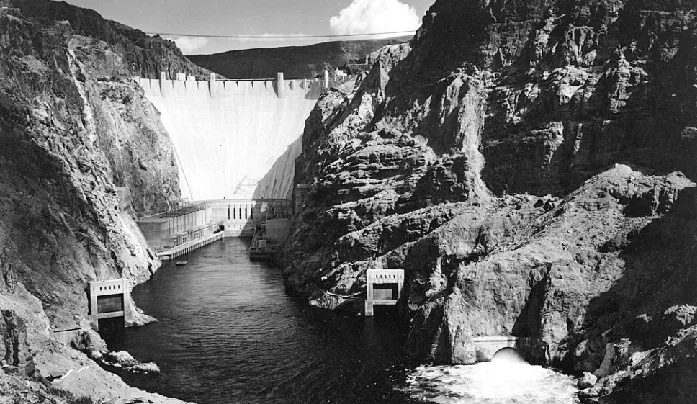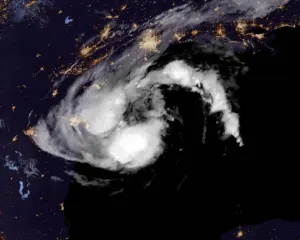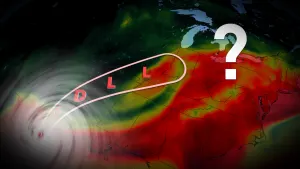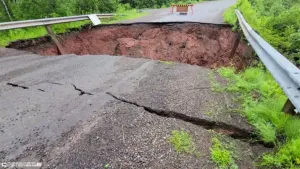
The U.S. may have to make its first-ever water shortage declaration soon
Officials may make the declaration in late summer.
Manmade lakes fed by the Colorado River that provide water for millions of people in the western U.S. and Mexico are expected to drop to record low levels in the next few months, according to a recently-released 24-month projection by the U.S. Bureau of Reclamation.
This could force the U.S. federal government to declare the nation's first-ever water shortage, promting cuts in Nevada and Arizona, the latter of which stand to lose up to one-third of its water suppy, phys.org reports.
An estimated 40 million people rely on water from the Colorado River.
The prediction suggests that over the next few months, less water from Colorado River will move through the Rocky Mountains and down to Lakes Powell and Mead, a resevoir formed by the Hoover Dam. It's feared levels could drop so low that it may not be possible to generate electrity at the dam, a resource that provides power to millions in California, Arizona, and Nevada.

Photograph of the Hoover Dam (formerly Boulder Dam) from Across the Colorado River; From the series Ansel Adams Photographs of National Parks and Monuments, compiled 1941 - 1942. Caption and photo courtesy: Wikipedia.
Officials are planning ahead by seeking out alternative water sources and implementing conservation efforts. For the past decade, components of the dam have been replaced so it can function with less water.
Another strategy in play by the Nevada agency that supplies water to the majority of the state is the installation of "straws" designed to draw water further down from Lake Mead to compensate for water level drops.
Las Vegas officials are looking to ban ornamental grass, an effort that could save an estimated 53 litres of water per person a day.
NO DECLARATION YET
The newly-published predictions are long-term, and officials won't make decisions about water allocation until August. If drought conditions are still in place at that time, mandatory reductions could begin after that.
Models forecast water levels at Lake Mead will fall below 328 metres for the first time ever in June. That's the threshold for prompting a shortage declaration agreed upon by Arizona, California, Colorado, Nevada, New Mexico, Utah, and Wyoming, the seven states that rely on the Colorado River.
"The study, while significant, is not a surprise. It reflects the impacts of the dry and warm conditions across the Colorado River Basin this year, as well as the effects of a prolonged drought that has impacted the Colorado River water supply," the Arizona Department of Water Resources and Central Arizona Project said in a joint statement.
Persistent drought has plagued the area for the past two decades, Arizona-based water management agency AMWUA says, and while extended dry cycles are common in the desert, AMWUA calls the current conditions and the impact on the Colorado River "historic," adding that conditions could be exacerbated in the future, given forecasts calling for hotter and drier conditions as we march toward the next decade.
But officials remain confident they can weather the conditions.
"As we face the prospect of a hotter and drier future, we are confident that with our long history of successful collaboration among our diverse stakeholders – agriculture, tribes, cities, environment, and industry, we will continue to find innovative and effective solutions to sustain Arizona’s Colorado River supply," Arizona Department of Water Resources and Central Arizona Project said.










